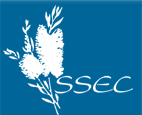Stormwater Management |
Surveys of residents of Sutherland Shire highlight concern for water quality in the Hacking. The following diagram highlights the relationships between different issues, and the table indicates (with reference numbers) the causes that are linked, and some indicative strategies to reduce the causes. |
 |
-
-
- Sewered areas - Faulty connections and breach or rules
- Unsewered areas - faults in on-site systems, un-maintained systems, illegal discharges
- Dumping of pollutants, contaminated sites.
-
- Residential and industrial site runoff
- Infrastructure site runoff
- Road runoff
- Development design and controls (ie minimise hard surfaces, protect natural vegetation, minimal impact foundations)
-
-
- Filters - protection of natural filter strips, effective construction controls.
- Street controls - trapping trash and sediment, street cleaning, maintenance
- Sediment/trash traps - design and maintance
- Active policing and supervision
-
- Leaks on site, non-connects
- Overstressing water table/soil (unsewered areas)
-
- Flowback from Cronulla STP.
- Surcharges, leaks and overflows in the system
- Low impact design controls - boardwalks vs concrete, minimum disturbance foundations, detention ponds, site coverage. Discourage slab on ground.
- Effective runoff controls for construction. Development approval conditions for builders, policing.
-
- Trash racks and sediment traps for major outlets. Maintance of end of pipe controls.
- Maintain natural safeguards - natural watercourses, filter strips, understories safeguarded.
- An integrated water cycle management perspective. Polluter pays and tight control and prosecution.
|
The problems are systemic, and systemic strategies are needed to fix them. Traditionally Council and other agencies have been committed to work plans rather than to systems intervention. A cultural change is required to make this shift in thinking.
What is the PHPS position?
PHPS believes an effective integrated approach is essential.
-
Council must foster a culture of concern for environmental outcomes, over and above accountability for work programs and projects.
-
Move from end-of-pipe management to an "at source" focus.
-
Make offendors, (builders with weak site controls, polluters), fully liable for the costs of rectification.
-
Make preservation of natural filters and watercourses a policy, both for engineers in Council and for developments.
-
Entrench best practice low impact design in all development control plans.
-
Require developers to sign a contract for site controls and environment protection, as part of the construction approval process.
-
If there is no effective action by Sydney Water by the end of 1999, begin to upgrade on-site controls in unsewered areas.
-
Increase prosecution of offendors, and publicise prosecution efforts.
-
Require a plumbers certificate of inspection before the issue of a s149 certificate.
-
Put in more small, local sediment and trash controls (not big 'too late' ones).
-
Provide a recurrent budget of no less than 5% of the capital costs of trash racks, drains and other protective devices, for maintenance and cleaning.
-
Monitor and report on the effectiveness of the strategy.
|
| top of page |



